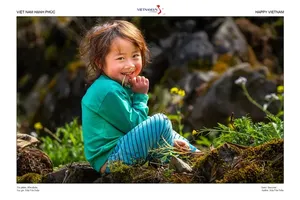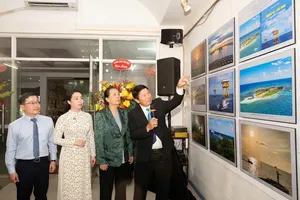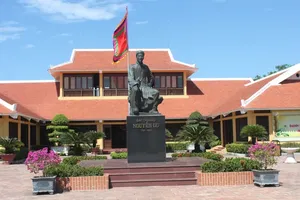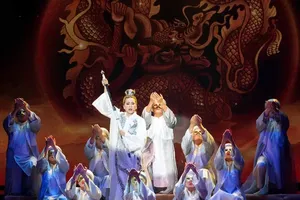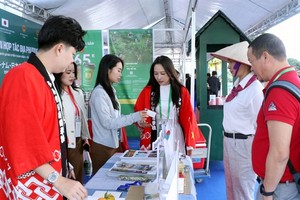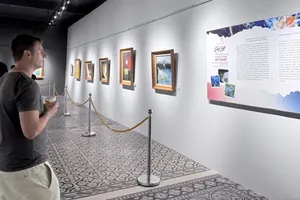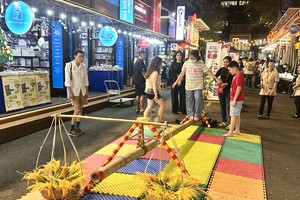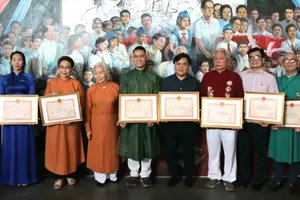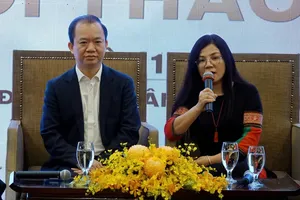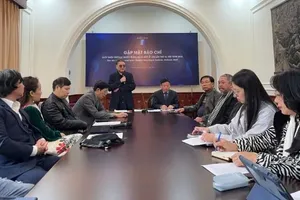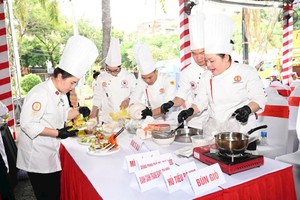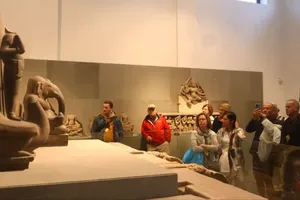When the Vietnam International Fashion Week Spring-Summer 2025 (AVIFW SS 2025) recently held in HCMC wrapped up, sixteen designers and fashion brands from Vietnam and other countries sparked a lively fashion season filled with identity and style.

Among the internationally renowned designers and labels—Julien Fournié (France), Alberto Zambelli (Italy), Frederick Lee (Singapore), Moral (Indonesia), and Behati (Malaysia), Vietnamese designers such as Vu Viet Ha, Dang Trong Minh Chau, Le Thanh Hoa, Adrian Anh Tuan, Thanh Huong Bui, Ivan Tran, and Cao Minh Tien showcased collections that clearly embodied the innovative essence of Vietnamese fashion.
With the theme Ban sac rieng tao phong cach (Distinct identity shapes style), this fashion feast was woven from the refined threads of tradition infused with contemporary flair. Designer Vu Viet Ha, known for his deep dedication to reviving old values, approaches fashion with meticulous care, consistently asserting a distinct identity within the global fashion flow.
Returning to AVIFW SS 2025, he unveiled the collection Ma Dao ( The horse’s return) , blending traditional elements with the vibrant rhythm of highland life. The cultural fragments in his work are carefully distilled and layered with meaning—from brocade fabrics repurposed from traditional dresses of ethnic minority communities, to every handcrafted detail of weaving, dyeing, and sewing—all serving as acts of cultural preservation. He further breathed new life into these traditional materials by incorporating Op art effects—an abstract, geometric art form that plays with visual perception—bringing a fresh and modern dimension to the heritage fabric.
Though it was her first time participating in AVIFW, designer Thanh Huong Bui made a striking statement about the limitless potential of the Vietnamese Ao dai with her collection Rose of the Dawn. Each piece is a meticulously crafted work of art, showcasing intricate 3D embellishment techniques and bold visual compositions. The Ao dai—a timeless cultural symbol—was reimagined for eveningwear, infused with a modern sensibility. Each design serves as a cultural vignette, honoring the original grace of the Ao dai while offering fresh perspectives on its expression in contemporary fashion.
According to fashion experts, over the past decade, Vietnamese fashion has made persistent efforts to reach the global stage. The next ten years will be pivotal as Vietnam works to establish its own distinct position on the international fashion industry map—not just as a manufacturing hub, but as a country with a fully developed fashion industry marked by unique cultural identity and global competitiveness.
Beyond AVIFW, numerous other fashion weeks including Vietnam Fashion Week, Vietnam Designer Fashion Week, Vietnam Kids Fashion Week, and The New Generation of Models as well as independent designer projects, have been opening new doors for Vietnamese fashion.
In pursuit of this goal, local designers are committed to sustainable fashion by utilizing recycled materials such as lotus silk, oyster shells, and bamboo stalks. They also ensure that cultural elements are integrated into each design, highlighting their unique identity.
According to President Trang Le of the Southeast Asian Fashion Designers Association and Chairwoman of Aquafina Vietnam International Fashion Week, this is a prime moment for Vietnamese designers and fashion brands to collectively tell their stories of identity.
Despite having garment manufacturing infrastructure, diverse raw materials, and a talented pool of designers, Vietnam still lacks a fully developed fashion industry in the true sense. A fashion industry encompasses more than just production—it is about building fashion brands, establishing textile conglomerates, and creating a system that supports brand identity and market competitiveness. However, it is still a question that how can Vietnam create homegrown fashion brands that can meet market demands and stand alongside global names.
President Trang Le of the Southeast Asian Fashion Designers Association said that Vietnam has the facilities to produce high-quality and premium products that can reach the global market, but the Southeast Asian country is still largely operating as subcontractors. Compared to the rest of the world, Vietnam remains a young, emerging market. Therefore, the creative industry is on the focus.
Entrepreneur Jonathan Hanh Nguyen, a key figure in bringing international fashion closer to the domestic market, shared that he is planning to scout outstanding Vietnamese designers to showcase alongside international names—part of a strategy to bring Vietnamese fashion closer to global consumers.
)
